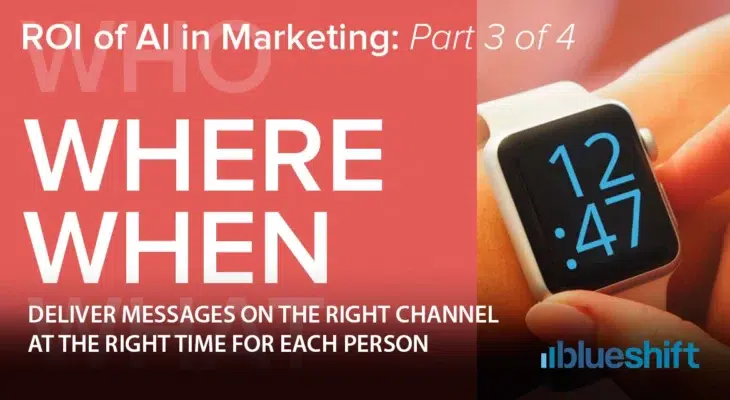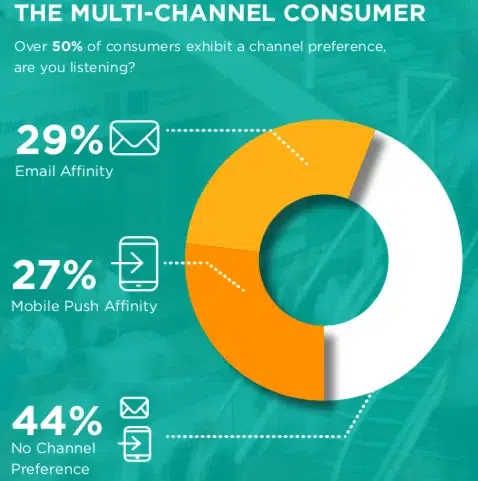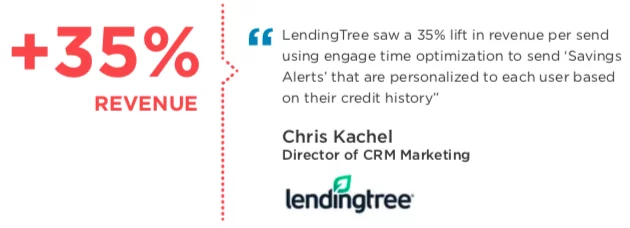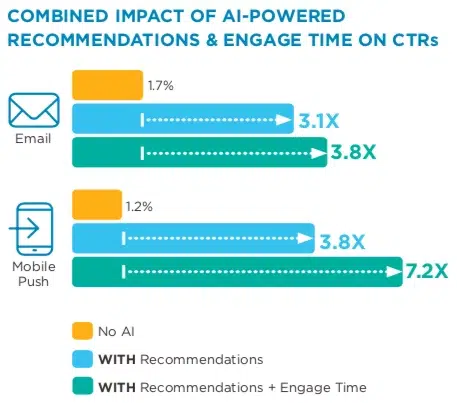Optimizing send times has long been standard practice for marketers. Traditional send time optimization requires manually analyzing historic trends and running A/B test campaigns at various times of day to determine optimal send times. But there are problems with this approach. For one, it treats your customer base as a uniform group and neglects the dynamics of today’s always-on, mobile, multi-device consumer. More importantly, it focuses on optimizing for opens, rather than downstream actions that drive revenue, such as website engagement and conversions.
If you’re not learning from customers’ behavior patterns as they use different devices, apps, and channels for different purposes at different times of the day, you’re taking a guess as to how to best engage with them. Can you afford to do that?
Fortunately, AI is here to help.
AI empowers marketers with incredible leverage, helping them better engage customers across every channel. By generating insights from every aspect of customers’ behavior and previous engagement with the brand, it makes precise recommendations as to how to engage with them depending upon your desired outcome.
It optimizes WHO marketers should be targeting, selects WHAT content they engage with, WHEN to engage with them and WHERE is the best channel. This “AI Marketing in Action” series explores AI’s impact on these 4 Levers of cross-channel marketing and quantifies its impact on each lever. Our findings are based on a recent benchmark study that analyzed 3.8B marketing interactions from campaigns across various channels and verticals.
In our last posts, we explored how AI helps you determine WHO are the right customers to target and WHAT is the best content to bring customers at any moment for each of your customer strategies. Now, we’ll explore how AI helps determine WHEN and WHERE customers see that content.







